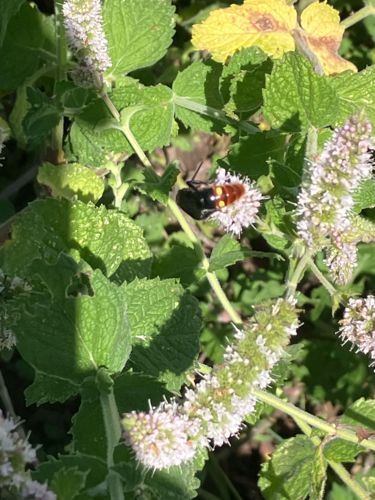Hummingbird Clearwing Moth
Scientific Name: Hemaris thysbe
Order & Family: Lepidoptera, Sphingidae
Size: Wingspan typically ranges from 1.5 to 2.2 inches (3.8 to 5.5 cm).

Natural Habitat
They are found in open woodlands, gardens, meadows, and suburban areas where host plants and nectar sources are abundant.
Diet & Feeding
Adults feed on nectar from a wide variety of flowers, including bee balm, phlox, honeysuckle, and sometimes mint (as seen in the image). Larvae typically feed on honeysuckle, hawthorn, dogbane, or viburnum.
Behavior Patterns
They are diurnal, foraging for nectar during the day, often hovering in front of flowers like hummingbirds. Larvae feed on the leaves of host plants, such as honeysuckle or hawthorn. They are strong, fast flyers and are often mistaken for bumblebees or hummingbirds due to their rapid wingbeats.
Risks & Benefits
Benefits: They are excellent pollinators, contributing to the reproduction of many flowering plants. They are completely harmless to humans; they do not sting or bite. Risks: Generally no significant risks; larval feeding on host plants is usually not extensive enough to cause significant damage.
Identified on: 8/22/2025